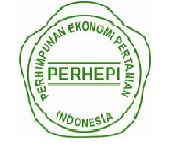Development of Organic Rice Cultivation through Dual System of Azolla microphylla in Gentungan, Mojogedang, Karanganyar, Indonesia
Abstract
The use of Azolla microphylla (Azolla) as organic fertilizer or green manure is not yet known by the Farmer Group (FG) of Tani Mulyo 1 and Tani Mulyo 5. Moreover, dual system of Azolla is applied to organic rice cultivation. The dual system of Azolla uses Azolla as a fertilizer and as a deterrent to the growth of weeds that interfere with rice plants. This partnership program aims to increase partners' knowledge about the dual system of Azolla and assistance and direct practice of Azolla application on cultivated organic paddy fields. The stages include socialization, counseling, mentoring, practice of Azolla application, and monitoring-evaluation. The results showed that the participants' knowledge about Azolla before the activity was 25% very not know, 45% not know, and 15% know enough. There was an increase in participants' understanding after the activity, 65% know and 25% very know or increased up to 100% compared to before the activity. The results of participant satisfaction showed that 65% of participants were satisfied and 10% are very satisfied with the activities carried out. As many as 70% of the partners stated that they would apply the dual system of Azolla in organic rice cultivation. The increasing understanding and awareness of partners will affect the development of organic rice cultivation.
Keywords
Full Text:
PDFReferences
Agnihotri, P., Sikdar, S., Maitra, M., Choudhury, S. S., & Mitra, A. K. (2022). Effect of combination of Azolla microphylla and As(V)-resistant bacterial consortium on growth, oxidative stress and arsenic accumulation in rice plant under As(V) stress. Vegetos, 35(3), 796–802. https://doi.org/10.1007/s42535-022-00345-y
Badan Pusat Statistik. (2020). Berita Resmi Statistik. bps.go.id
Indarmawan, T. (2012). Pengaruh konsentrasi pupuk Azolla pinnata terhadap populasi Chaetoceros sp [Universitas Airlangga]. https://repository.unair.ac.id/26460/
Qohar, A. F., Hendarto, E., & Munasik. (2020). Pertumbuhan rumput raja (Pennisetum purpureophoides) defoliasi kedua akibat pemupukan kompos yang diperkaya dengan Azolla microphylla. Prosiding Seminar Nasional Pembangunan Dan Pendidikan Vokasi Pertanian, 1(1), 1–9. https://doi.org/10.47687/snppvp.v1i1.120
Rosalina, F., & Kahar, M. S. (2018). The effect of composting azolla compost fertilizer and humic material on CO2 gas production in sand land. Bioscience, 2(2), 29–37. https://doi.org/10.24036/0201822100974-0-00
Sambodo, A. S., Sudadi, S., & Sumarno, S. (2014). Pengaruh pupuk organik berbasis azolla, fosfat alam, dan abu sekam padi terhadap hasil kacang tanah di Alfisol. Caraka Tani: Journal of Sustainable Agriculture, 29(2), 73–79. https://doi.org/10.20961/carakatani.v29i2.13324
Sudadi, S. (2017). Keterpaduan antara beternak puyuh, lele dan azolla dalam mengatasi limbah puyuh dan mahalnya pakan lele. PRIMA: Journal of Community Empowering and Services, 1(1), 11–15. https://doi.org/10.20961/prima.v1i1.35148
Sudadi, S., Sumarno, S., & Handi, W. (2014). Effect of organic fertilizer-based azolla, rock phosphate and hull ash on rice yield and chemical properties of Alfisols. Sains Tanah - Journal of Soil Science and Agroclimatology, 11(2), 77–84. https://doi.org/10.15608/stjssa.v11i2.223
Sudadi, & Suryono. (2016). Pemanfaatan azolla sebagai sumber pakan pada budidaya sistem ganda azolla - lele. Caraka Tani: Journal of Sustainable Agriculture, 31(2), 114–117. https://doi.org/https://doi.org/10.20961/carakatani.v31i2.11992
Syamsiyah, J., Herdiansyah, G., & Hartati, S. (2021). Pengenalan budidaya azolla untuk mendukung pengembangan pertanian organik. PRIMA: Journal of Community Empowering and Services, 5(1), 38–46. https://doi.org/10.20961/prima.v5i1.44865
Syamsiyah, J., Sunarminto, B. H., & Mujiyo, M. (2016). Potensi azolla sebagai substitusi pupuk kandang pada budidaya padi organik. Caraka Tani: Journal of Sustainable Agriculture, 31(2), 102–107. https://doi.org/10.20961/carakatani.v31i2.11956
Syarif, R. G., Widijanto, H., & Sumarno, S. (2013). Pengaruh dosis inokulum azolla dan pupuk kalium organik terhadap ketersediaan K dan hasil padi pada Alfisol. Sains Tanah - Journal of Soil Science and Agroclimatology, 10(2), 63–70. https://doi.org/10.15608/st-jssa.v10i2.196
Thapa, P., & Poudel, K. (2021). Azolla: Potential biofertilizer for increasing rice productivity, and government policy for implementation. Journal of Wastes and Biomass Management, 3(2), 62–68. https://doi.org/10.26480/jwbm.02.2021.62.68
Vintarno, J., Sugandi, Y. S., & Adiwisastra, J. (2019). Perkembangan penyuluhan pertanian dalam mendukung pertumbuhan pertanian di Indonesia. Responsive, 1(3), 90–96. https://doi.org/10.24198/responsive.v1i3.20744
Widianingrum, D. C., Dewi, N., Fanata, W. I. D., & Sholikhah, U. (2021). Pengembangan budidaya Azolla Mycrophilla sebagai Alternatif pakan ternak dan pemanfaatannya sebagai pupuk bio organik di wilayah masyarakat Desa Baletbaru, Sukowono. Jurnal Abdimas Madani Dan Lestari (JAMALI), 3(1), 11–19. https://doi.org/10.20885/jamali.vol3.iss1.art2
Widyartini, D. S., Hidayah, H. A., & Insan, H. A. I. (2019). Budidaya Azolla microphylla menggunakan kotoran kambing. Prosiding Semnas LPPM Unsoed, 9(1), 492–501. http://jurnal.lppm.unsoed.ac.id/ojs/index.php/Prosiding/article/view/1046/0
Yanshi, & Rahal, A. (2019). Azolla-Emerging Animal Feed. International Research Journal of Natural and Applied Sciences, 6(01), 1–12. https://www.academia.edu/38321255/AZOLLA_EMERGING_ANIMAL_FEED
Yaqiin, N. A., Rahmah, A. O., & Salman, S. (2022). Pengaruh pemberian pupuk urea dan pupuk organik cair Azolla microphylla terhadap produktivitas kedelai pada lingkungan tumpang sari. Journal of Innovation, 1(1), 33–42. https://ejournal.papanda.org/index.php/jira/article/view/104/78
DOI: https://doi.org/10.20961/prima.v7i1.74161
Refbacks
- There are currently no refbacks.
View My Stats

This work is licensed under a Creative Commons Attribution-ShareAlike 4.0 International License.


.jpg)



1.jpg)











